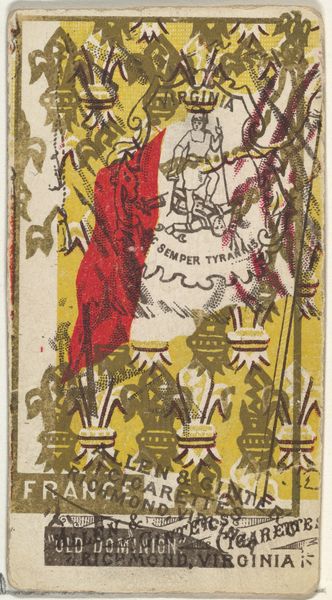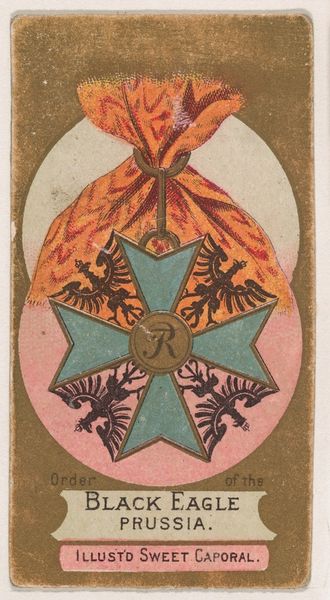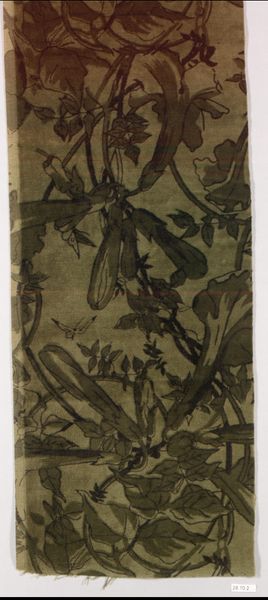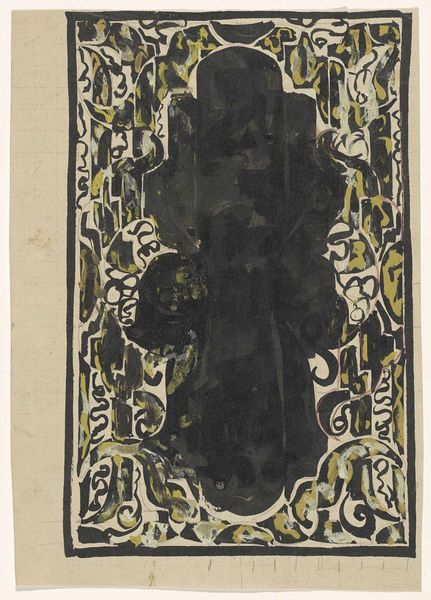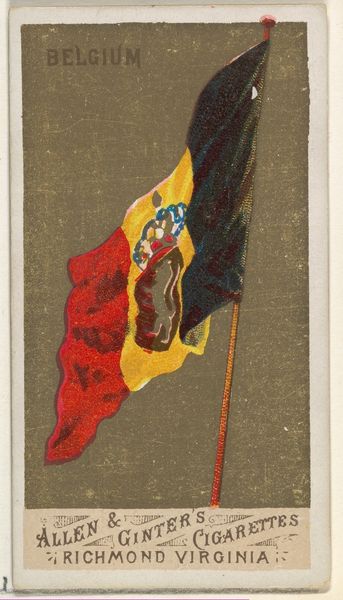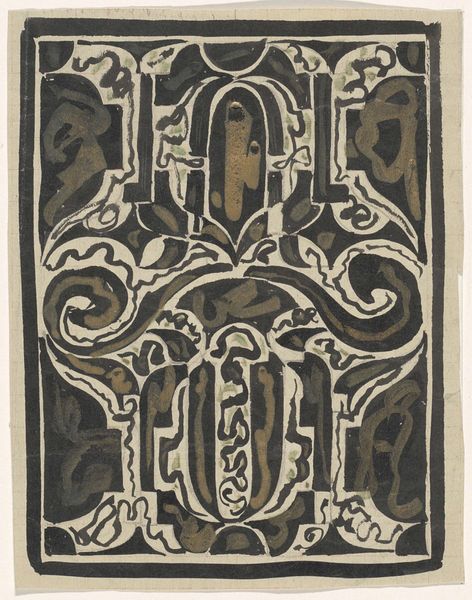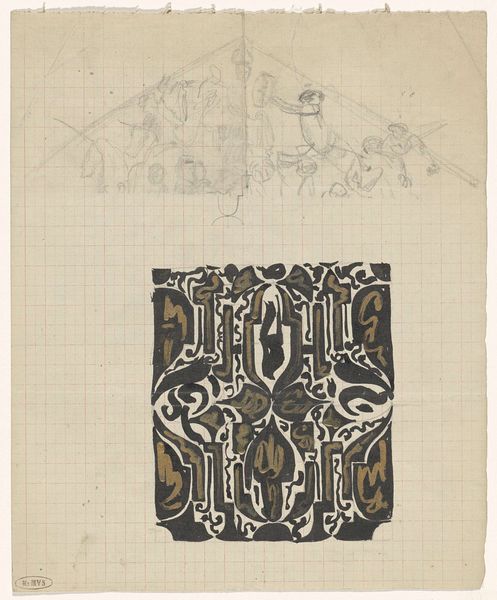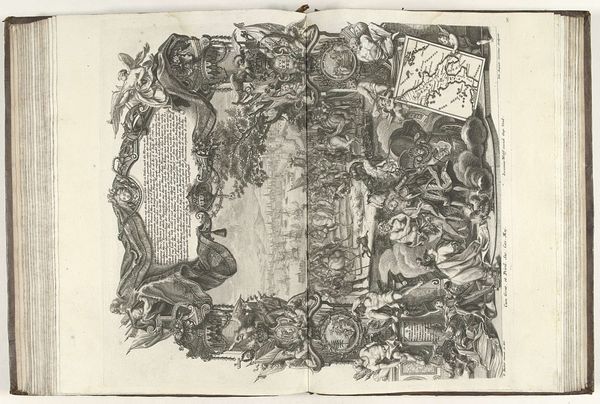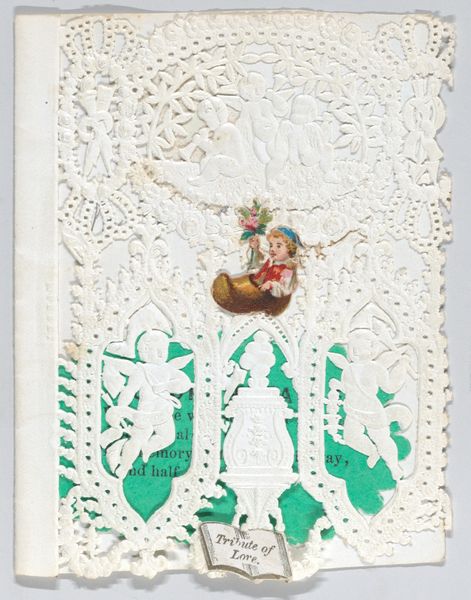
Connecticut and Ireland (double-printed card), from Flags of All Nations, Series 1 (N9) for Allen & Ginter Cigarettes Brands 1887
0:00
0:00
drawing, graphic-art, print, collotype, poster
#
drawing
#
graphic-art
# print
#
appropriation
#
collotype
#
history-painting
#
academic-art
#
poster
Dimensions: Sheet: 2 3/4 x 1 1/2 in. (7 x 3.8 cm)
Copyright: Public Domain
Curator: This is an advertisement card dating back to 1887, produced by Allen & Ginter Cigarettes. It’s part of a series called “Flags of All Nations” and this one bizarrely merges Connecticut with Ireland. Editor: It strikes me immediately as rather…cluttered. There's a dense overlay of symbols—flags, flowers, and lettering crammed into this small rectangular frame. Is that intentional, some kind of…semiotic overload? Curator: Exactly. Cigarette cards like these were designed to be collected, traded, and glued into albums. By appropriating patriotic imagery they gained an elevated social value, beyond just peddling tobacco. The layering, as you noted, created a rich visual landscape, reflecting the perceived wealth and diversity of the brand’s consumer base. Editor: So it's a pastiche of cultural symbols… But how do Connecticut and Ireland relate? There are shamrocks and what seems like Connecticut’s state motto, "Qui Transtulit Sustinet." A strange pairing indeed. The formal composition feels unresolved as well. My eyes struggle to find a focal point. Curator: The connection is, of course, tenuous. The rising wave of Irish immigration into Connecticut and America during the late 19th century might explain it, catering to an evolving demographic through idealized images and familiar cultural markers in order to associate the product with patriotic feeling, a new "American" cultural identity being born and promoted by advertising. Editor: The colours—muted yellows, reds, and browns—convey a kind of old-world charm, which I find at odds with its role as commercial ephemera. There’s an attempt to elevate it, yet the execution is… well, a bit haphazard. Curator: I think that tension is what makes it interesting. These cards walk a line between high-minded imagery and base consumerism. They tell us a lot about the marketing tactics, anxieties and aspirations that animated America during the Gilded Age. Editor: I can see that the deliberate artistic choices offer a rich understanding of art as a cultural artifact of consumerist identity in late 19th century America. It is fascinating how so much history can be distilled in this format. Curator: Right. It shows us how even something as fleeting as a cigarette card can become a time capsule for understanding societal values.
Comments
No comments
Be the first to comment and join the conversation on the ultimate creative platform.

